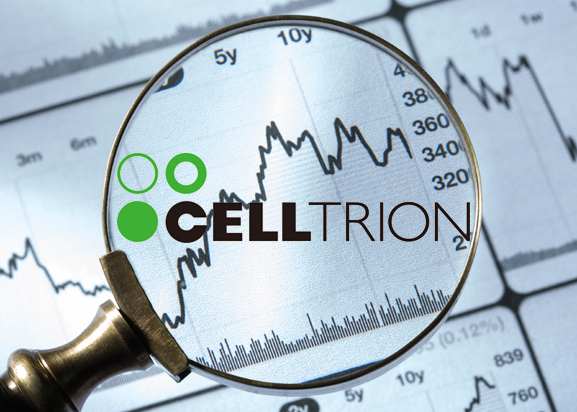Local stock analysts’ eyes are now on the profit-sharing structure of the Celltrion Group. The biosimilar maker has recently released Remsima (component: infliximab) in the U.S. market and is waiting for approval to sell a breast cancer therapy Herzuma (trastuzumab) and a blood cancer therapy Truxima (rituximab) by 2019.
Samsung Securities삼성증권 said if Celltrion’s sales are 100, those of Celltrion Healthcare 셀트리온헬스케어, and their marketing partners would be 149 and 218, respectively.

Currently, Celltrion’s distribution partners in the U.S., Japanese and European markets are Pfizer화이자, Nippon Kayaku, and Mundi Pjarma먼디파마.
Researchers Lee Seung-ho이승호 and Park Won-yong박원용 at Samsung Securities put the company’s rate of sales cost, the rate of selling, general & administrative expense (SG&A), and operating profit ratio at 67 percent, 18 percent, and 47 percent, respectively, based on the public data of the recent three years. The comparable rates for Celltrion Healthcare, the distributing arm of the group, were 67 percent, 8 percent, and 23 percent, respectively.
The researchers also supposed the corresponding rates of its overseas marketing partners would be 69 percent, 8 percent, and 23 percent, respectively.
"Celltrion produces biosimilars and delivers them to Celltrion Healthcare, which in turn supply the products to hospitals and clinics in foreign countries through its marketing partners,” the report said. “You can think Celltrion is the manufacturer, Celltrion Healthcare is the wholesaler, and marketing partners are retailers."
Also, they calculated the operating profit ratios of Celltrion Healthcare and Celltrion would be 44.3 vs. 55.7 based on their income statements, predicting they will maintain the ratio in the future.
"Celltrion and Celltrion Healthcare have adjusted their transfer prices every year based on agreement and the review of outside accounting firms,” it said. “If Celltrion’s rate of cost to sales improves because of a rise in capacity utilization ratio or improved product mixes and Celltrion Healthcare’s profit margin increases because of improved business average or better product mix, the two companies make it a rule to distribute profits optimally by adjusting transfer prices.”
The aggregate income of Celltrion Healthcare and Celltrion will likely change from the sales of 755.7 billion won ($670 million), operating profit of 424.3 billion won, and net profit of 344.3 billion won last year, to the sales of 908 billion won, operating profit of 508.5 billion won and net profit of 412.6 billion won this year.
The analysis excluded the possibilities of declining drug prices and sales volume caused by fierce competition, as well as changes in the distribution rate of operating profits and slowdown in mid- and long-term growth.

